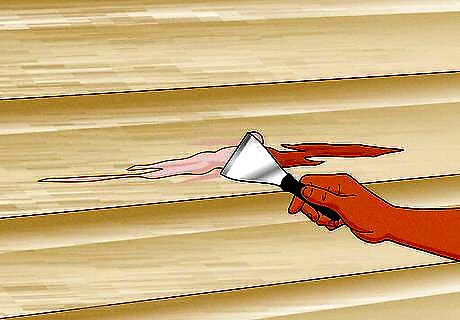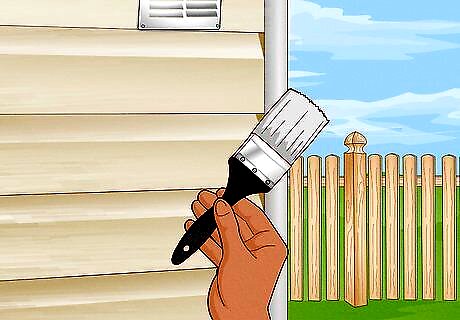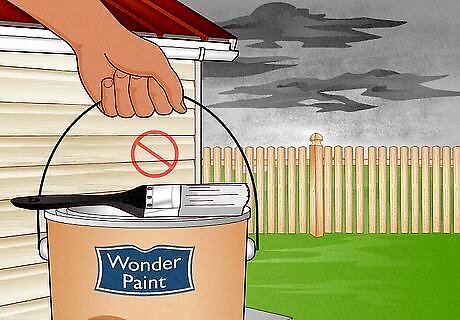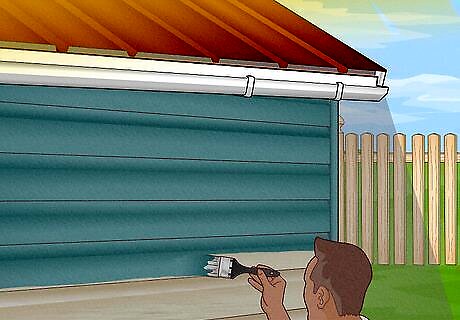
views
X
Expert Source
Andres MatheuCommercial Painter
Expert Interview. 28 July 2020.
Preparing the house for painting

Start with an exterior house wash. It is important that you spend some time washing the dirt and grime off the exterior of your house before you start painting. If the exterior surface of your house is free of paint-repelling soil, the primer and paint will adhere better, making the paint last longer. Most of the time, a simple wash with a hose, a pump sprayer and a scrub brush is sufficient, but if you decide that you would prefer a professional to help you, a power washer in the hands of a professional can provide a superior clean. It is not recommended that you use a power washer on your own unless you are familiar with them because they can cause damage to house wood siding and house trim if used incorrectly.

Remove chipped and flaking paint from the exterior walls. Before you paint the exterior of your house, scrape off any bubbling, flaking or blistering paint. Painting over this could cause future problems for your new house painting project. Strip these parts right back so that they no longer present a problem.

Sand the area you are painting. The goal when painting the exterior of your house is to have the cleanest and most beautiful exterior you can. Sanding will help by smoothing out any bumps or lumps that can look strange under a fresh coat of paint.

Patch and fill holes in the house. The goal here is to repair any damage that could worsen over time, which may require a future painting of your home. Be sure that you repair any rotten wood, fix any dents and replace damaged pieces of your home that might get worse in the future.

Caulk and seal any windows or openings to prevent air and water from leaking in. This may be the most important part of the prepping process. It's important to have a well-maintained, beautified, non-rotting wood house, but it's just as important to make sure that the windows, cracks and openings aren't leaking air or letting in water, which can ruin the interior of your house. Depending on the severity of the deterioration, you can even resort to using a heavy duty, professional grade, industrial caulking.
Painting the House

Use a paintbrush for better control and better precision. Paint sprayers can be messy in an unpracticed hand. Alternatively, you could use a mini-roller to go along your siding a little faster. Except for siding, brick and large doors, try to avoid using rollers as they don’t cover as well, and it is harder to be as precise as a paintbrush. Take good care of your paintbrushes. Wash them out after every painting session, without fail. That way, they'll stay in great condition for much longer.

Start at the top of your house and work your way down. This serves two purposes. First, it allows you go down the ladder instead of up as you work, preventing potentially life threatening falls. Also, when prepping/scraping the paint off, you will have debris falling on the bottom areas that you just painted. Second, painting from top to bottom prevents messy drips and missed spots. Ideally, you should also start painting from the left side and work your way right because you are more likely to see any missed spots.

Don’t start painting if it might rain. Whilst latex paint is fairly steadfast once it’s dried, a good rain while it’s still wet can wash the paint away. It's better to wait until the rain is no longer in the forecast than trying to paint on a rainy day and have to start all over again later.

Follow the shade. When you are painting the exterior of your home, you would be wise to follow the shade from your house and avoid the sun. As the sun moves around your house, try to avoid the sun as much as possible because you may become overheated with the sun beating down on you, and painting in direct sunlight (depending on the heat of the day) is not good for the application process and can cause bubbling/adhesion issues. By moving with the shade, you minimize these potential problems. For example, if it is sunny in the morning on the east side of the house, rather paint on the west side of the house.




















Comments
0 comment